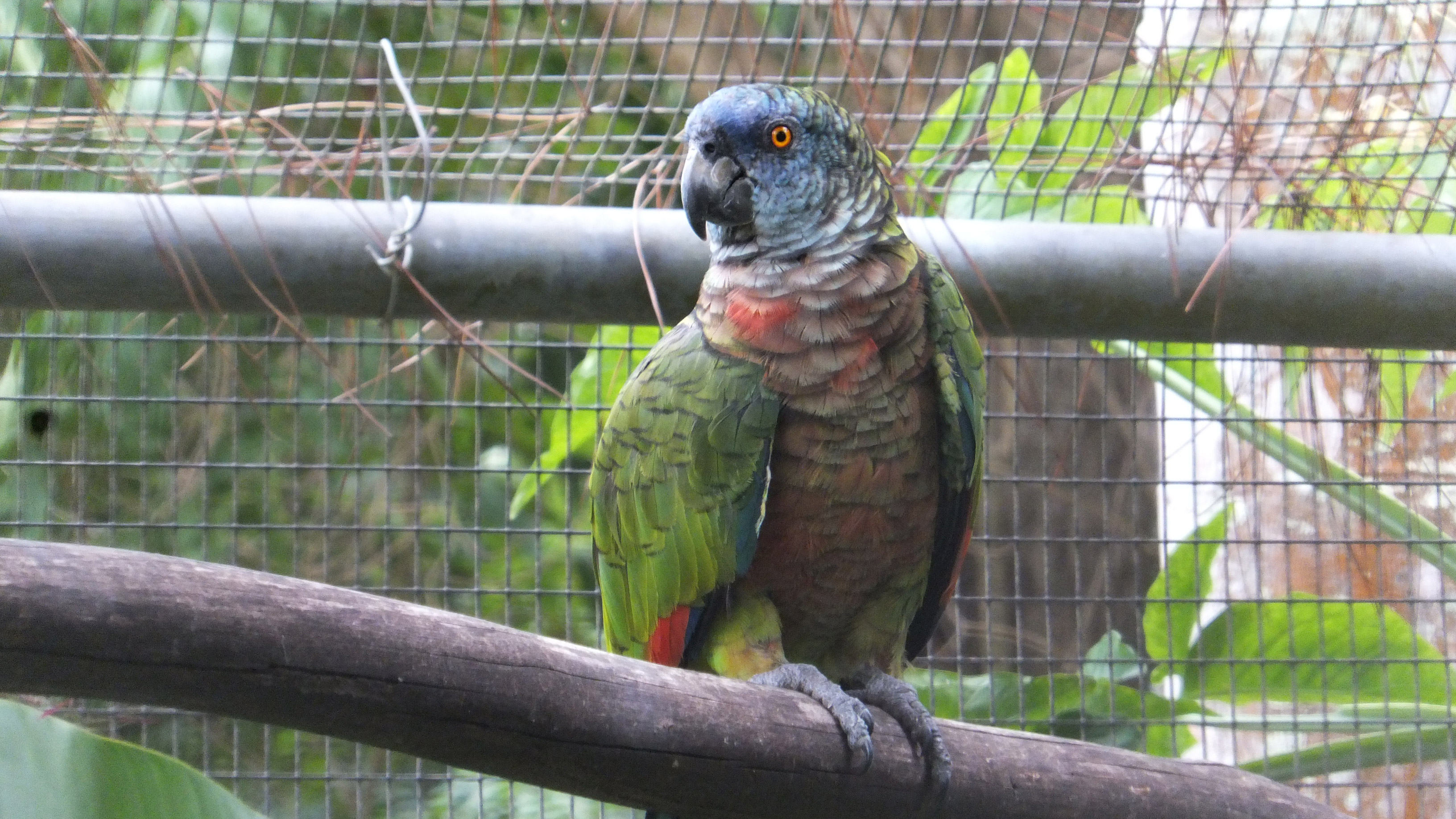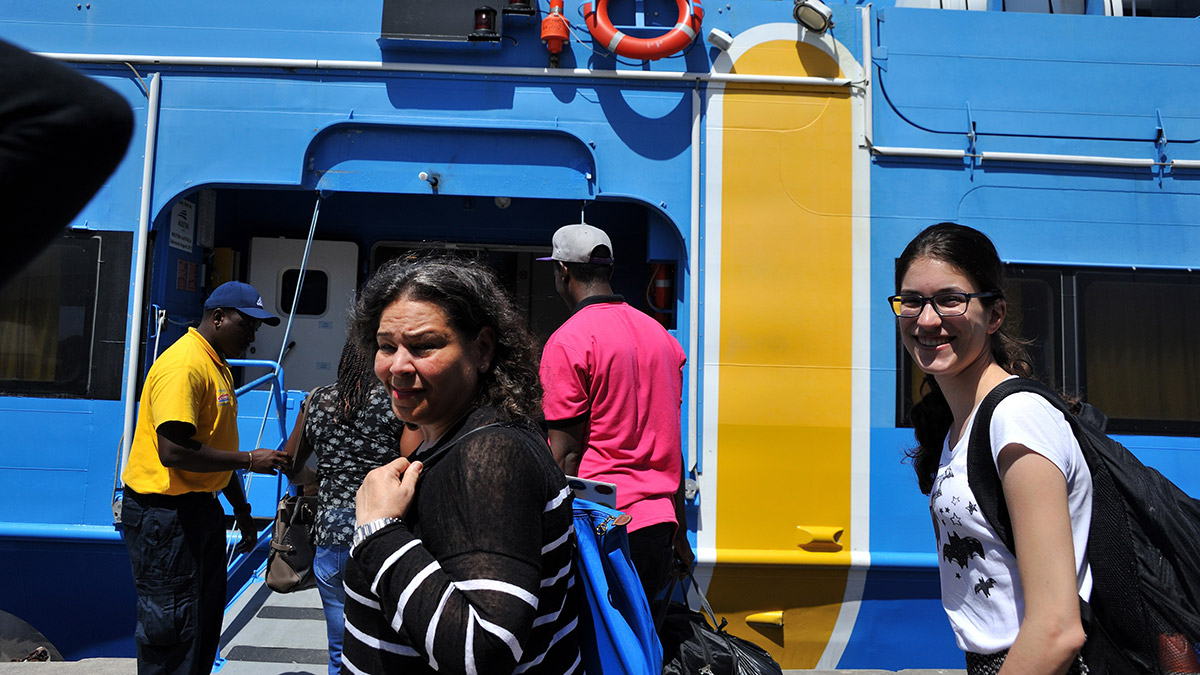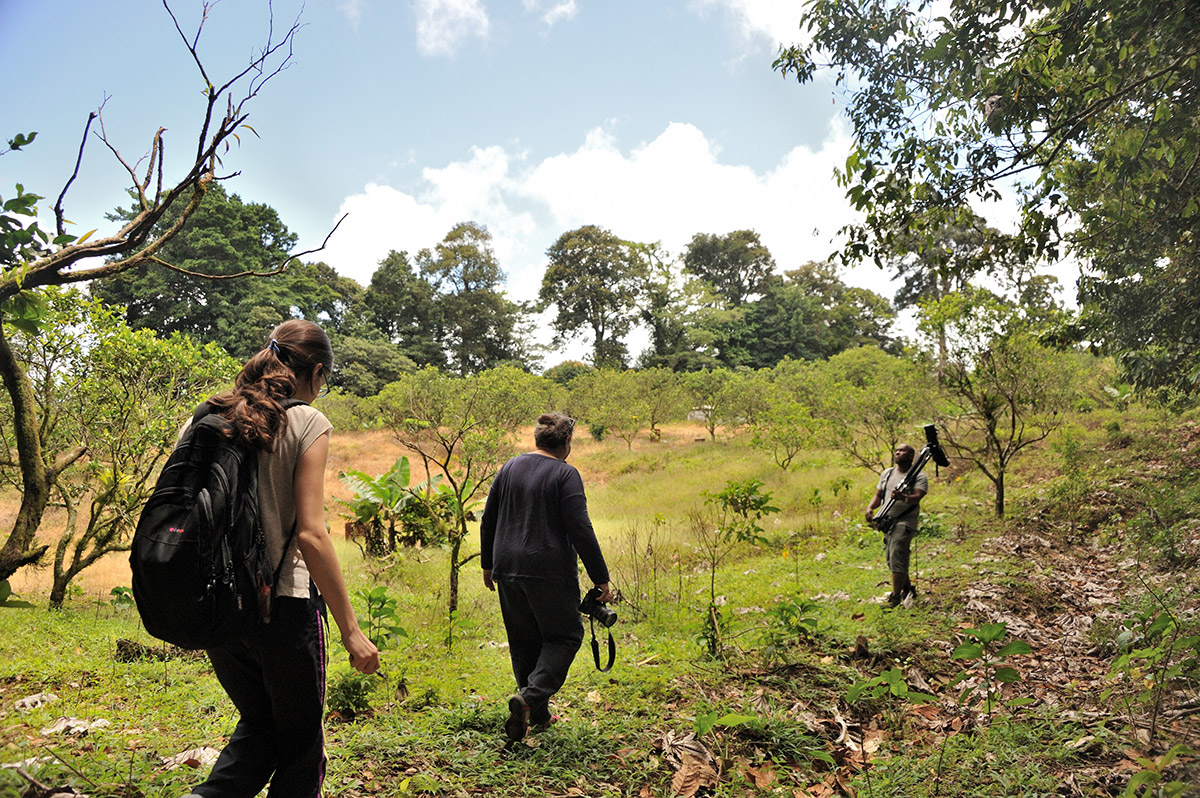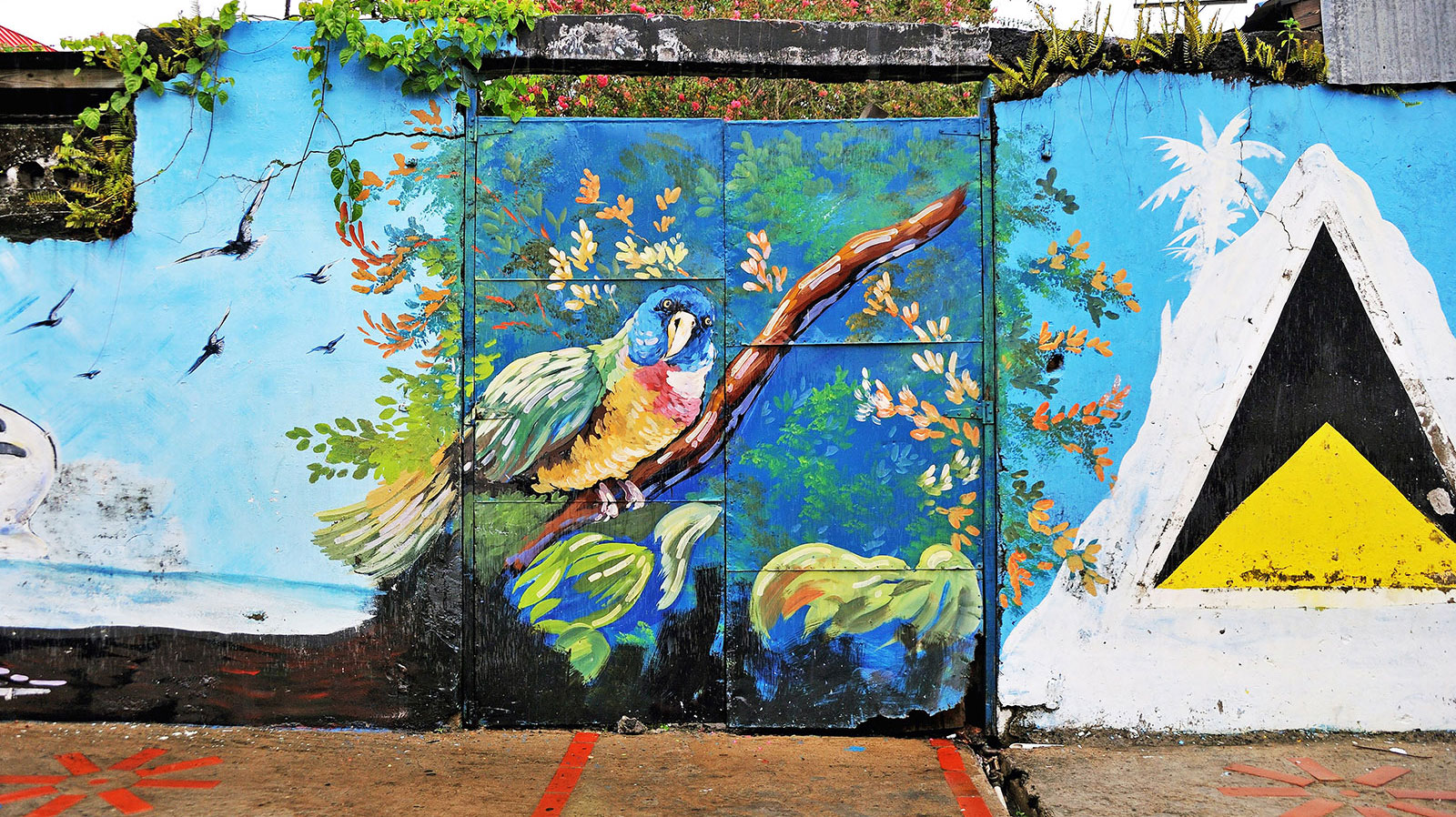When European explorers and exploiters first arrived in the Caribbean in the 15th and 16th centuries, the Amazon parrots of St. Lucia and Dominica embarked on a slow but seemingly inexorable path to extinction. Christopher Columbus and his crew captured some of these colorful birds on their first voyage to North America in 1492 and brought them back to Europe to gift as exotic pets. And over the next five centuries, the parrots lost much of their habitat as large plantations supplanted what had been lush jungle habitat.

St. Lucia’s Amazona versicolor at the offices of the island’s Forestry Department Environmental Education Unit
By the 1970s, the parrots’ future looked truly bleak. Only about 150 of them remained on the island of St. Lucia; fewer than 250 remained on Dominica. Then one man, a British conservationist named Paul Butler, inspired the people of the two tiny island nations, appealing to their national pride, to take the necessary steps to save their native birds from extinction. What’s happened to the parrots in the 40 years since is a resounding success story. More than 6,000 of them are now thriving on the two islands, and they’ve been taken off the endangered species list.
This spring, under the auspices of Vassar’s Ford Scholars program, Gabriela Mandeville ’19 and Hispanic Studies Prof. Lizabeth Paravisini-Gebert traveled to St. Lucia and Dominica to talk to forest rangers, government officials and others responsible for protecting the parrots. Their stories will be chronicled in a book Paravisini-Gebert is writing on environmental issues in the Caribbean as well as in a class she will teach next spring. “It’s an incredible story,” she says, “a watershed moment for birds that lived here for a million years and almost died out 40 years ago.”

Mandeville, a neuroscience major from New York City, became interested in Paravisini-Gebert’s study of the parrots when she worked with her as a research assistant during her first year at Vassar. Mandeville notes that the government of Dominica had already launched a campaign to raise public awareness about the plight of the parrots on the island before Butler arrived there in the 1970s. But she says Butler certainly deserves credit for enhancing the movement on Dominica and initiating the campaign on St. Lucia.
“It’s an incredible story—a watershed moment for birds that lived here for a million years and almost died out.”
The national pride movement included public awareness advertisements in local media about the long history of the birds on the islands and educational campaigns in local schools. Soon, Paravisini-Gebert says, farmers began cooperating with forestry officials by no longer killing the birds when they attacked their crops, and in some cases, leaving their farms and taking other jobs the government had created as alternatives. She and Mandeville gathered information on current initiatives from Alleyne Regis, a former government official in Dominica who took over the program after Butler left. Butler is currently a senior vice president of RARE, a worldwide conservation group.

Mandeville says the fervor for the parrots among forest rangers in both Dominica and St. Lucia remains strong. “We met so many people there who are passionate about this issue,” she says. “We were looking for people in Dominica and St. Lucia who took pride in their heritage and history and who were taking responsibility for saving these birds from the brink of extinction, and we found them.”
Mandeville and Paravisini-Gebert say several people in Dominica told them they should talk to a retired forest ranger named Bertrand Jean-Baptiste, who was nick-named “Dr. Birdy” because he had spent years observing the parrots in the wild. They had scheduled a trip with a guide for a Sunday and were told a few days beforehand that the trip would have to be re-scheduled for that Saturday instead. “When we showed up, we learned our guide would be Dr. Birdy,” Paravisini-Gebert says.

Jean-Baptiste had been a member of Dominica’s forestry department in the 1970s when the national campaign to save the parrots had started, Paravisini–Gebert says. “He spent hours every day sitting in trees observing their habits, hearing their shrieks and admiring their beauty,” she says. “It was truly serendipitous to meet this man.”
While they were on the hike with Jean-Baptiste, a rainstorm passed through the forest. When the rain stopped, Mandeville says, Jean-Baptiste told them the birds would soon “perch on tree branches and shake the water from their feathers, and that’s what they did.”
Paravisini-Gebert says she began to understand the depth of pride the people of St. Lucia and Dominica have for these birds when she interviewed a scientist whose principal job was taking blood samples from the parrots to study their DNA. “Here was this scientist whom you’d expect to be fairly clinical about the parrots, but while we were with him, we saw two of them flying over the ocean,” she says. “He became very emotional. He choked up as he told us, ‘This is something you’d never see 40 years ago.’”
